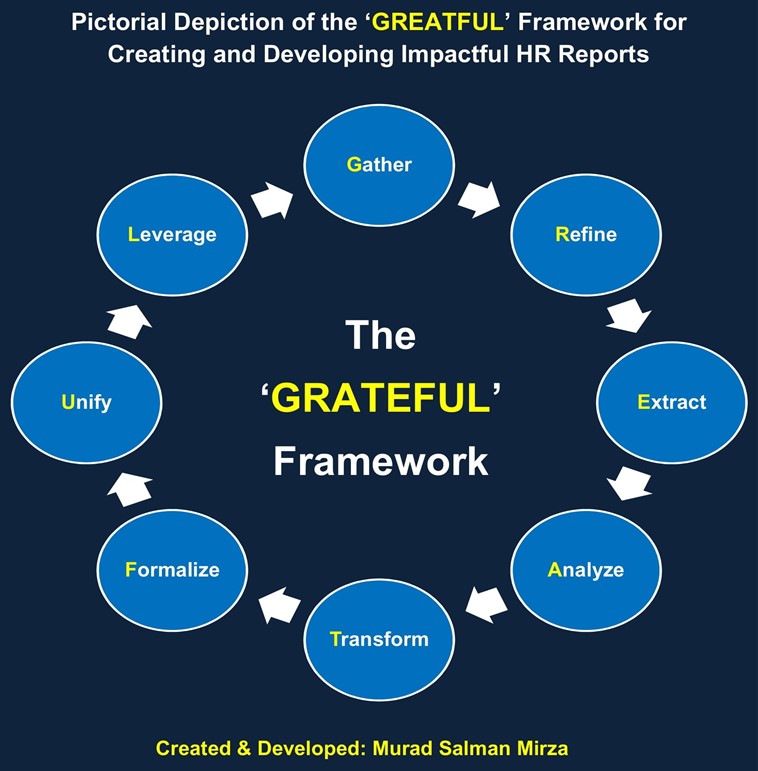(An Actionable Guide for the HR Functions within Progressive Organizations)
Reports play an influential part in leadership decision-making in terms of being the key conduits for systemized/synthesized/synchronized information derived from collected data. They are frequently peppered with suggestions/recommendations to mold/facilitate/justify ‘executive action’ in a certain direction.
One of the key skill deficiencies in even the most ‘experienced’ and ‘polished’ HR professionals is the ability to write ‘influential’ reports that can provide a firm basis for decision-making by the corporate leadership. This can become a significant impediment in gaining necessary approvals, e.g., allocation of resources, organizing events, engaging in CSR initiatives, creation of new positions, elimination of minimum-value/obsolete positions, reducing the penchant for redundancies, justifying the buying of more expensive technology than the cheaper options, etc., while competing with other functions that are often much more savvy in terms of producing, positioning and promoting written content that drives skewed decision-making in their favor.
The imperative for creating impactful HR reports has become increasingly significant in the Digital Age, especially, due to the ‘online’ option since it can be transmitted to anywhere in the world and can be scrutinized by ‘multiple eyes’ before having a chance of being presented/defended formally at a leadership forum. Poorly written reports can also have an adverse effect on the careers of ‘hardworking’ HR professionals who might be deemed unsuitable for further progression due to the ‘perceived’ inability to advocate their cause in a convincing manner.
The ‘conventional’ wisdom used to be that one could ‘talk’ their way out of a difficult situation or ‘captivate’ an audience through the strength of his/her oratory skills. However, such ‘norms’ are rapidly becoming obsolete due to the desire of the decision-makers to focus on relevant analytics that can be backed up by robust proof in the form of corroborating/irrefutable written evidence that can subsequently become an invaluable part of the ‘knowledge bank’ for future initiatives.
Meanwhile, speaking skills retain their significance in terms of communicating the ‘message’ in a ‘persuasive’ manner, however, they can be rendered ‘toothless’ if compelling reports are not at the vanguard of their advocacy. Consequently, the following ‘GRATEFUL’ framework is being provided to support the HR professionals in creating and developing impactful HR reports that can ‘carry the day’ for them:

Gather
This refers to the collection of raw data that can be obtained through various means, e.g., surveys, interviews, focus groups, brainstorming sessions, feedback questionnaires, etc. It is imperative that the nature and size of the ‘sample’ should be a close match with the demographics of the population being studied. Additionally, the collection methods/tools should be standardized and the skill levels of the ‘data collectors’ known in advance before engaging them to embark upon the respective activity . Any limitations/difficulties in the collection of such data should be clearly identified so that a clear foundation is laid in terms of the ‘boundaries’, within which, the ‘validity’ of the data is confirmed beyond a ‘reasonable’ doubt.
Refine
This refers to the sanitization of the raw data so that it is free from any biases and abnormalities, e.g., recognizable preferences of specific data collectors, failures in following prescribed data collection protocols, presence of extensive outliers, etc. It will ensure that the collected data is reliable and doesn’t carry ‘embedded’ weaknesses in terms of distorting the results upon being converted into information. It is essential that the curation of the raw data is carried out by suitably skilled ‘data reviewers’ who are independent from the ‘data collectors’ so that they can provide an independent adjudication on what data needs to be included for further processing. Care should be taken that the original data is also preserved securely for a comparative study that might be needed if an objection is raised on the quality of curation.
Extract
This refers to the aggregation of the sanitized data into meaningful information that can subsequently be examined/evaluated/explored for discernible patterns and other desirable parameters/characteristics. Such an activity can be carried out by the suitably skilled ‘data reviewers’ themselves or passed on to competent ‘information managers’ for creating the foundations of an evidence-driven HR report. Appropriate tools/techniques should be applied judiciously in assuring and ensuring that validity of the extracted information is not compromised in any manner, especially, in terms of diluting/degrading the desired outputs. It is important to note that the ‘extracted’ information at this stage may be much more than what is actually needed for the desired HR report, therefore, only ‘relevant’ information should be forwarded for appropriate analysis.
Analyze
This refers to reviewing the ‘extracted’ information in terms of specific parameters/characteristics to ensure that no ‘required’ areas have been neglected. It entails careful scrutiny of the ‘provided’ contents with an unbiased mindset and an openness to embrace ‘uncomfortable’ truths. It requires clear guidelines from the leadership, especially, in terms of what is not formally authorized to form part of the HR report, especially, in view of the intended readership, e.g., utilization of overly jargonized language that alienates certain functions, proliferation of personal opinions without factual evidences, overt/covert unjustifiable attacks on identified professionals, unfiltered use of abusive language, disclosure of confidential information, withholding details of ongoing investigations against certain employees for disciplinary issues, etc. This should be done by a senior member of the HR team or the Head of the respective function.
Transform
This refers to converting various pieces of information into an unambiguous and consistent stream of coherent reasoning that is propped up by the preponderance of factual evidence. It requires an ‘honest’, ‘transparent’ and ‘conscientious’ deliberation among the senior management of the HR function in terms of finalizing the formulation of the report that maximizes the probability of gaining a favorable response from the decision-makers. Lessons learnt from past experiences should be an integral part of such an exchange of views. This discussion should be chaired by the head of the HR function and critically take into consideration all the pros and cons of the perspectives being presented by the senior team members before agreeing upon the most viable strategy for structuring of the HR report.
Formalize
This refers to shaping, developing and aligning the various sections/segments of the report on a viable template that collates information with substantiating evidences, e.g., surveys, interviews, graphics, web links, drawings, pictures, tables, references to earlier reports, etc., in an effective manner. It is the tangible outcome of the strategy evolved from the prudent discussions held by the senior management of the HR function during the ‘Transform’ phase. Care must be taken in terms of adhering to the formatting requirements with ‘standardization’ and ‘error-free’ as the guiding principles. This should be done by a senior member of the HR team in close coordination with the head of the respective function.
Unify
This refers to integrating the various sections/segments of the report into a systematic and coalescing pattern that draws the maximum attention from the reader by ‘tickling’ their curiosity and ‘sustaining’ their interest throughout the written content. This is the stage where the question ‘does it all make sense in a coherent and convincing manner’ should be addressed by engaging multiple readers from the HR team to provide an independent and an honest feedback. It is akin to creating a ‘magnetic effect’ of reading a great book that entices the reader into one section after another with tantalizing details without allowing boredom or apathy to take root. This is the refinement of the output achieved during the ‘Formalize’ phase and should be done by the head of the HR function.
Leverage
This refers to the ‘final review’ of the formulated HR report and focuses on assessing the optimization of the contents of the report by assuring that only the necessary sections/segments are allowed to dominate in terms of gaining the attention of the reader. Such an astute approach helps in engaging concentration towards the ‘core’ parts of the report by utilizing compelling ‘levers’ that project the ‘real’ focus of the respective report through corroborating evidences, e.g., surveys, interviews, web links, pictures, graphics, tables, references to earlier reports, etc. This should be done in a meeting of the senior members of the HR function to achieve a consensus view in terms of achieving the high probability of success in fulfilling the aims/objectives of the HR report. The head of the HR function should present the report to the leadership upon the satisfactory conclusion of this stage.
The HR Function has been at the forefront of managing the ‘humanistic cost’ for the organizations that have struggled in staying afloat/relevant due to the devastating impact of the COVID-19 Pandemic. They have to routinely walk the fine line of seeming like a conniving ‘enemy’ to aggrieved stakeholders and a trusted ‘friend’ to beneficiary stakeholders. The aforementioned framework has been created and developed to bolster their initiatives in being an influential voice at the ‘Big Table’. They are the frontline function for maintaining/sustaining a harmonious working environment while battling the plethora of rumors/misgivings/apprehensions floating among an increasingly irate/disillusioned/sensitized workforce. Consequently, it will be prudent to embrace the principled approach of the following 5Ps in the respective context: Stay Pertinent, Stay Purposeful, Stay Pragmatic, Stay Positive, and Stay Professional.






